Cover photo by Stewart Bruce MacLachlan.
Find the Blue Riverjack in the FBIS database (Freshwater Biodiversity Information System) here.
Family Platycnemididae
Identification

Near Port Elizabeth, Eastern Cape
Photo by Andre Marais
Medium sized with a robust build.
Length reaches 41mm; Wingspan attains 56mm.
The Blue Riverjack is unlike any other South African species. Males are strikingly coloured in bright blue and black bands and stripes. Males are distinctive and easily identified.
Females are similar to those of Mesocnemis singularis (Savanna Riverjack), but that species lacks the pale diagonal band on the sides of the thorax. The two species are not known to co-occur.
Click here for more details on identification.
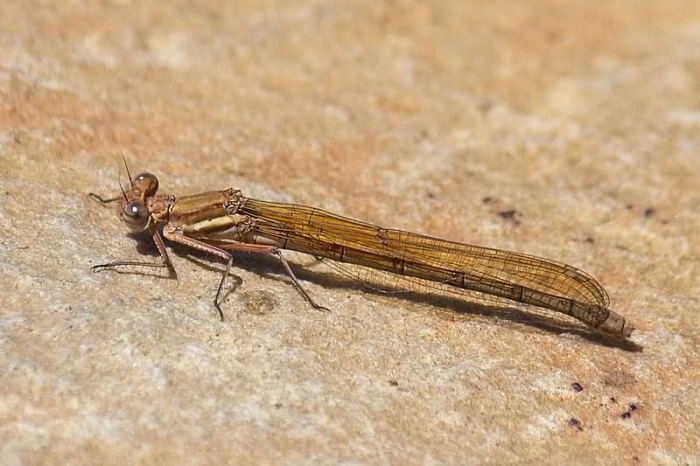
Photo by Hesmarie Els
Habitat
The Blue Riverjack has a preference for rocky, fast-flowing rivers and streams. It requires clean, clear and shallow water with an abundance of rocks.
Behaviour
The Blue Riverjack perches on rocks, close to the waters edge in exposed sunny locations. Perches less often on overhanging or emergent plant stems. The Blue Riverjack often sits in the midstream and females are frequently found alongside the males. It flies low and fast over the water when disturbed.
Most active from November to March (See Phenology below).
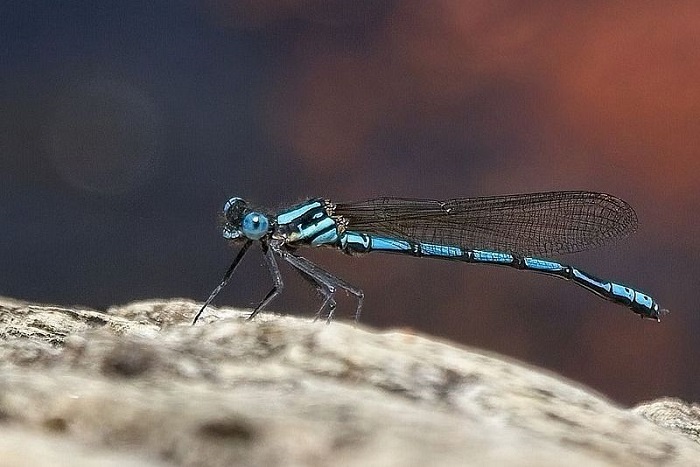
Photo by John Wilkinson
Status and Conservation
The Blue Riverjack is rare and localised. It is listed as Endangered in the IUCN Red List of Threatened Species. Metacnemis valida is not tolerant towards habitat degradation and is severely threatened by habitat loss within its restricted distribution. Negative impacts on its habitat include turbid water from soil erosion and copses of alien trees along the river banks that shade out rivers.
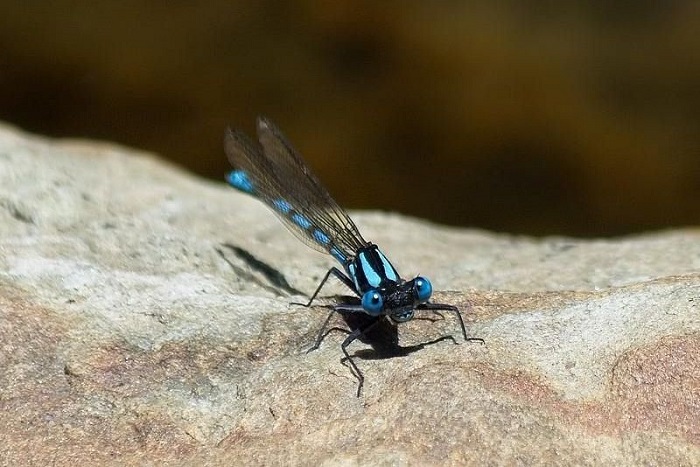
Photo by Hesmarie Els
Distribution
The Blue Riverjack is endemic to the Eastern Cape province of South Africa. It ranges from near Humansdorp in the South to Bizana in the north.
Below is a map showing the distribution of records for Blue Riverjack in the OdonataMAP database as at February 2020.

Below is a map showing the distribution of records for Blue Riverjack in the OdonataMAP database as of December 2024.
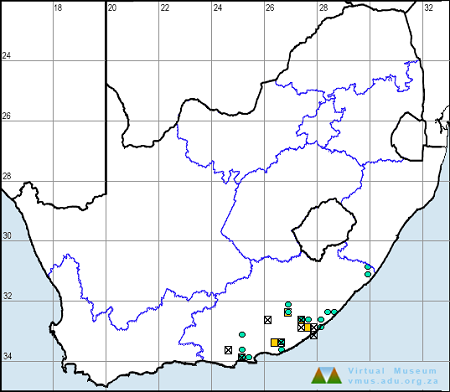
The next map below is an imputed map, produced by an interpolation algorithm, which attempts to generate a full distribution map from the partial information in the map above. This map will be improved by the submission of records to the OdonataMAP section of the Virtual Museum.


Ultimately, we will produce a series of maps for all the odonata species in the region. The current algorithm is a new algorithm. The objective is mainly to produce “smoothed” maps that could go into a field guide for odonata. This basic version of the algorithm (as mapped above) does not make use of “explanatory variables” (e.g. altitude, terrain roughness, presence of freshwater — we will be producing maps that take these variables into account soon). Currently, it only makes use of the OdonataMAP records for the species being mapped, as well as all the other records of all other species. The basic maps are “optimistic” and will generally show ranges to be larger than what they probably are.
These maps use the data in the OdonataMAP section of the Virtual Museum, and also the database assembled by the previous JRS funded project, which was led by Professor Michael Samways and Dr KD Dijkstra.
Phenology



Photo by Cornelia Rautenbach
Further Resources
The use of photographs by Andre Marais, Cornelia Rautenbach, Hesmarie Els, John Wilkinson, and Stewart Bruce MacLachlan is acknowledged.
Blue Riverjack Metacnemis valida Hagen in Sélys, 1863
Other common names: Kibusi Streamjack (Alternative English Name); Blourivierjuffer (Afrikaans)
Recommended citation format: Loftie-Eaton M; Navarro R; Tippett RM; Underhill L. 2025. Blue Riverjack Metacnemis valida. Biodiversity and Development Institute. Available online at https://thebdi.org/2020/04/20/blue-riverjack-metacnemis-valida/
References: Tarboton, M; Tarboton, W. (2019). A Guide to the Dragonflies & Damselflies of South Africa. Struik Nature.
Samways, MJ. (2008). Dragonflies and Damselflies of South Africa. Pensoft
Samways, MJ. (2016). Manual of Freshwater Assessment for South Africa: Dragonfly Biotic Index. Suricata 2. South African National Biodiversity Institute, Pretoria
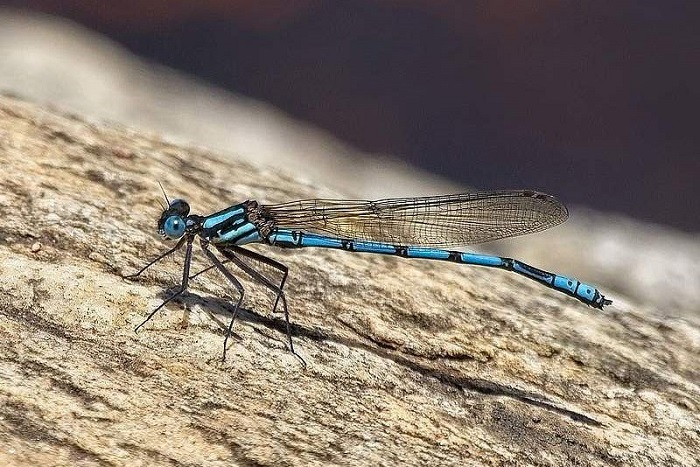
Photo by John Wilkinson

